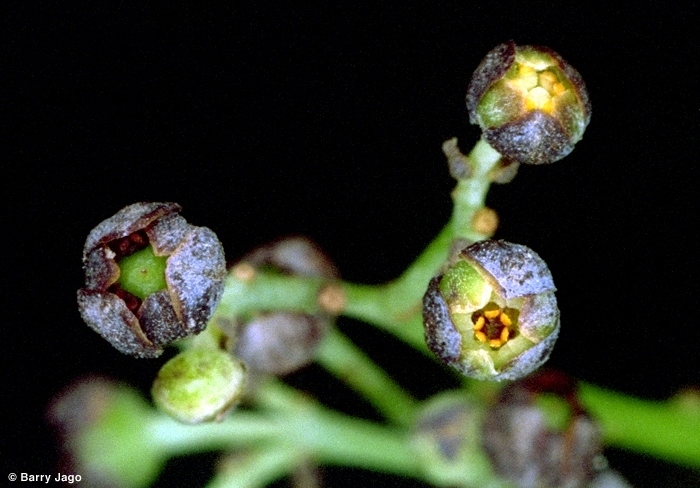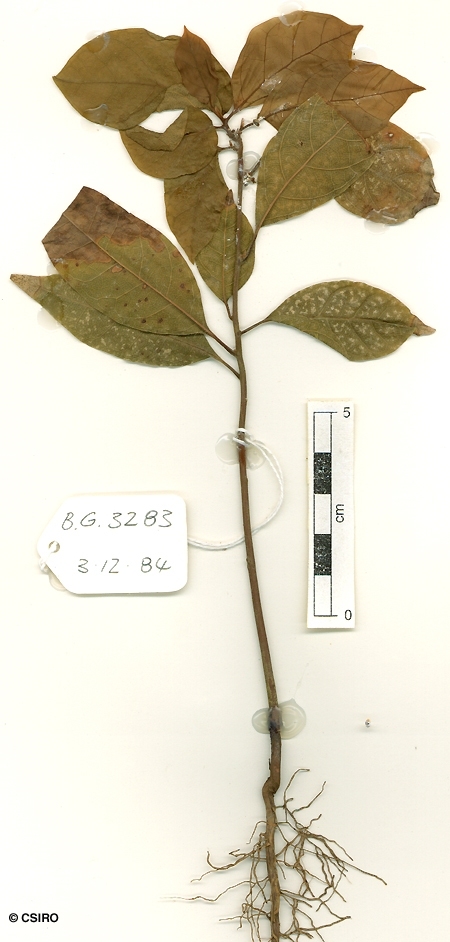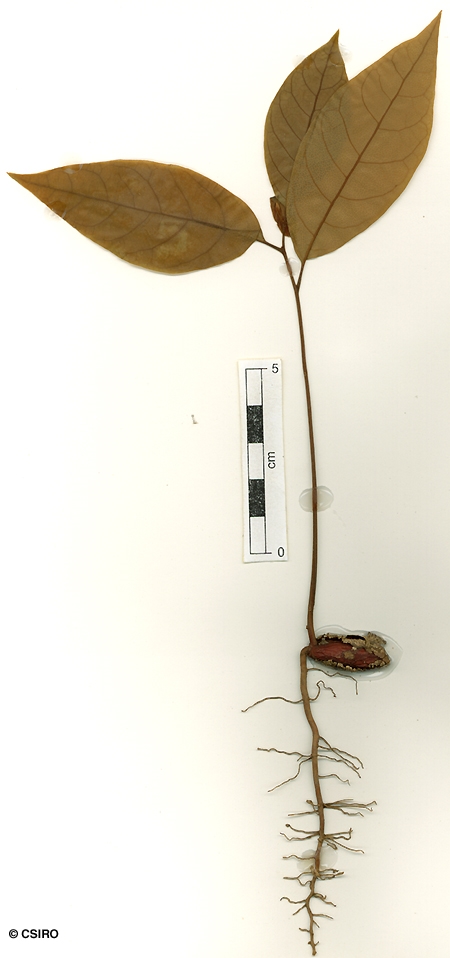Australian Tropical Rainforest Plants - Online edition
Endiandra leptodendron B.Hyland








Hyland, B.P.M. (1989) Australian Systematic Botany 2: 237. Type: B. Gray 2978: State Forest Reserve 755, Boonjee Logging Area, 22.ii.1983 (QRS, holotypus).
A small tree seldom exceeding 30 cm dbh. Blaze odour resembling guava (Psidium guajava).
Twigs terete or slightly fluted, clothed in straight and tortuous, appressed and erect, white or pale brown hairs. Leaf blades about 9.5-16 x 4-7.5 cm, green on the underside, glabrous or sparsely clothed in tortuous, erect, pale brown hairs. Midrib raised or flush with the upper surface. Petioles flat or channelled on the upper surface. Oil dots visible with a lens.
Flowers +/- domed at the apex, scarcely opening at anthesis, the tepals surrounding the anthers so that only the tips of the anthers, their valves and the stigma are exposed. Tepals about 0.9-1.8 mm long. Staminal glands six, free from one another. Staminodes three, differentiated into a head and stalk.
Fruits ellipsoid, about 18-29 x 12-14 mm. Seed about 13-18 x 9-11 mm. Cotyledons cream or yellowish.
First pair of leaves ovate or lanceolate, about 40-50 x 15-22 mm, green on the underside. At the tenth leaf stage: leaves hairy along the midrib on the upper surface; oil dots clearly visible with a lens; petiole and stem clothed in short tortuous hairs. Seed germination time 25 to 74 days.
Endemic to NEQ, widespread in the area. Altitudinal range from sea level to 1000 m. Grows as an understory tree in lowland and upland rain forest on a variety of sites.
This species has no commercial value as it does not grow large enough to produce millable logs. Wood specific gravity 0.87. Hyland (1989).





